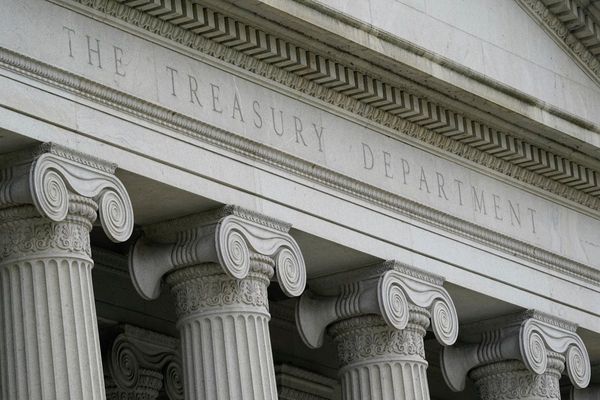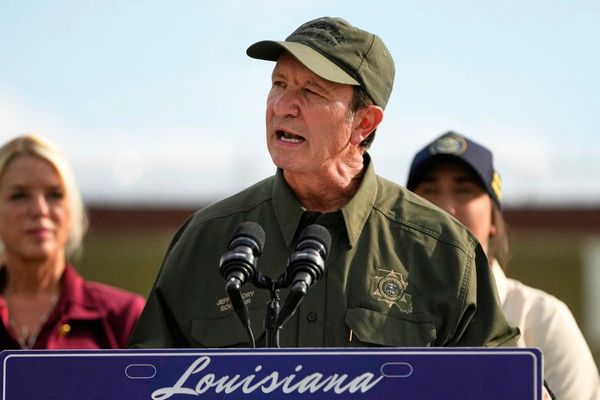
The Coalition’s $7bn surplus for 2019-20 has been pumped up by a combination of accounting bring-forwards and tough administration around a series of welfare programs that will cause them to be underspent in the coming year.
Together they account for $4bn of the $7bn surplus.
The government has added nearly half a billion to the surplus by making an early payment before 30 June of a GST top-up it promised Western Australia in the wake of the Productivity Commission’s GST carve-up.
A footnote in Budget paper No 3, dealing with federal-state relations says: “The government will pay Western Australia $434 million of its 2019-20 top-up payment in 2018-19.”
The result of this accounting bring-forward is to make the deficit for this financial year larger, but the surplus $434m larger in 2019-20.
A similar accounting bring-forward, which adds $1.3bn to the surplus has been used for local government grants.
“In 2018-19, these financial contributions will total $2.5bn, recognising that $1.3bn will be brought forward from 2019-20 to be paid in 2018-19,” the budget papers say.
The government justifies bringing forward half the grants to local government as necessary to allow “immediate use of these funds in 2018-19, particularly in areas affected by severe or unexpected weather events”.
Chris Richardson, from Deloitte Access Economics, said he was not particularly fazed by the bring-forwards, and that it amounted to a political decision on whether to have a surplus or near surplus this financial year or in the 2019-20 financial year.
“They could have made a surplus this year [2018-19]. On the accrual measure, we have been in surplus for some months,” he said.
More controversially, the budget also said that cash payments are forecast to decrease by a further $5.7bn in 2019-20 since the mid-year economic forecasts.
This is due to what the government describes as “parameter changes and other variations”.
Parameter changes come in two forms: “economic parameter changes”, such as a change in the unemployment rate, and “program-specific parameter changes”, which refer to changes in the way a program is administered.
The government has said it will save $2.33bn in 2019-20 from the second form of parameter changes, raising questions about its stewardship of major welfare programs.
The savings can come down to how harshly a means test is applied, how complex it is to apply for a benefit, eligibility rules or even whether the phones are answered to resolve disputes on accessing a payment.
Advocates for the disability sector say the $1.6bn the government has booked in 2019-20 from underspending on the national disability insurance scheme is a case in point.
“People are having to wade their way through red tape and people who don’t have families in their corner, people who have complex needs, Indigenous people and people from non-English speaking backgrounds are missing out,” said the disability advocate Kirsten Deane from Every Australian Counts.
She says that even when people access the NDIS, they are often struggling to then purchase the services in their care plans.
“They are very far behind in approving assistive technology like wheelchairs. There are two-year delays for some people,” she said.
Deane said the underspend should be spent on a real, concerted effort to help those people missing out. She also points out that the $1.6bn is the projected underspend for the next financial year and the budget does not disclose what the underspend is in this financial year. Estimates range from $1.6 to $3bn.
Pensioners have also contributed to the surplus. The government has reduced its expected spend on pensions by $311m for 2019-20 and $1.4bn for the four years of the forward estimates.
Paul Verteege from the Australian Pensioners and Superannuants Association says the underspend is due to a number of factors: the pension age has gone up from 65 to 66 and will go up further to 67, and secondly, superannuation savings are beginning to kick in.
“There’s a third reason, too. On 1 January 2017, the asset test taper rate doubled, reducing the pension payments of hundreds of thousands of pensioners,” he said “This may actually be the most important reason why the spending on the age Pension has gone down.”
Then there is a fourth reason: from July 2019, the government will require proof-of-life certificates every two years from pensioners over the age of 80 living overseas, a move that is expected to save $150m a year.
While most people would applaud measures that stop pensions being paid to dead people, some underspends are harder to explain.
The government expects to spend $193m less than expected six months ago on payments to students in the 2019-20 year. The budget says this is due to lower-than-expected recipient numbers and higher earnings by students.
One possible factor is a freeze to the means test for eligibility for three years, which was introduced in 2017. But what is causing students to work more and forgo Youth Allowance in greater numbers is unclear.
Richardson says the budget reveals some megatrends, notably falling spending over the next 10 years. The shift to greater profits, lower wages growth and people working longer has meant the tax take remained unaffected but that required spending is falling, he says. “It’s neither evil or good, but it’s pretty remarkable.”







